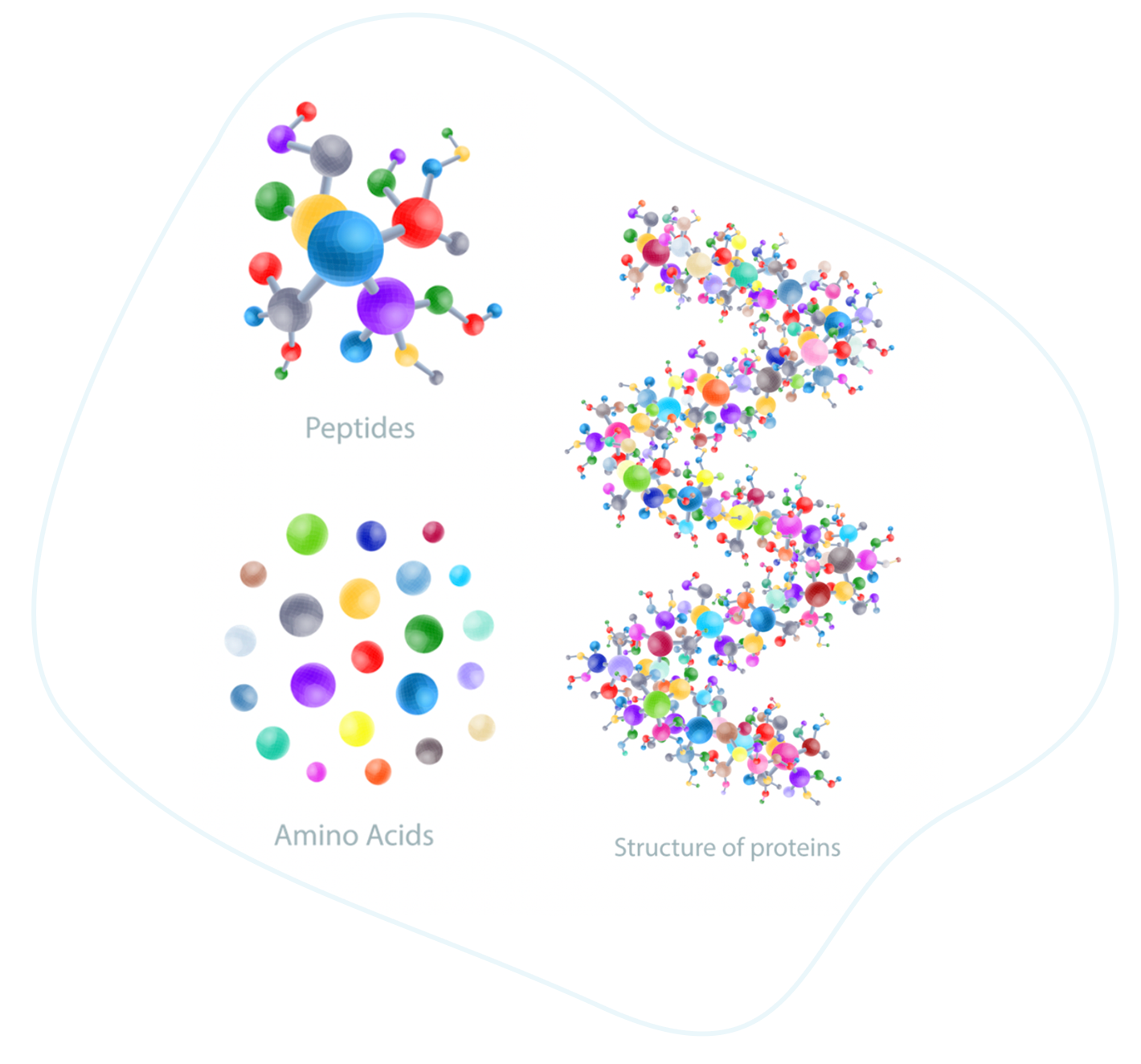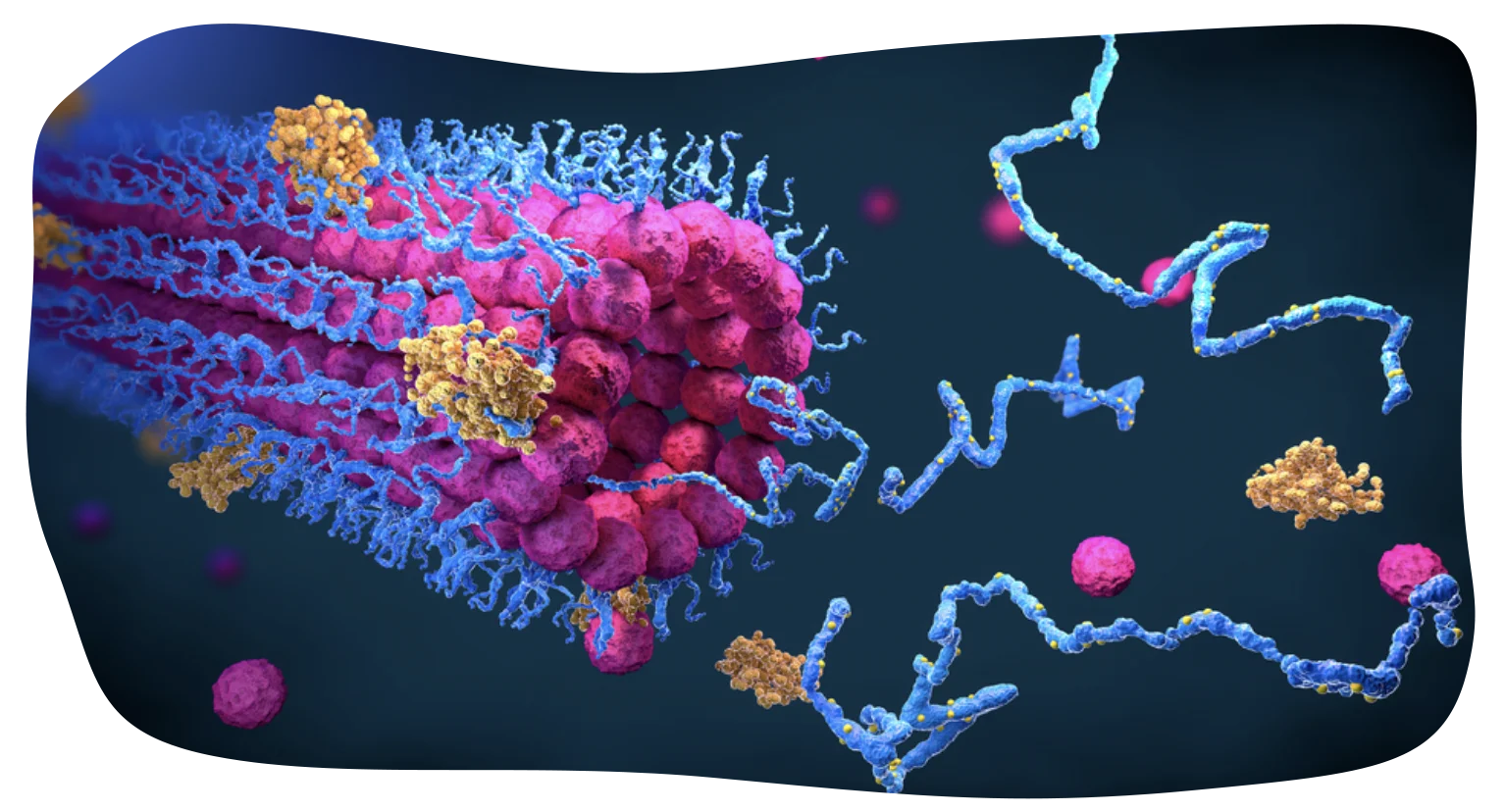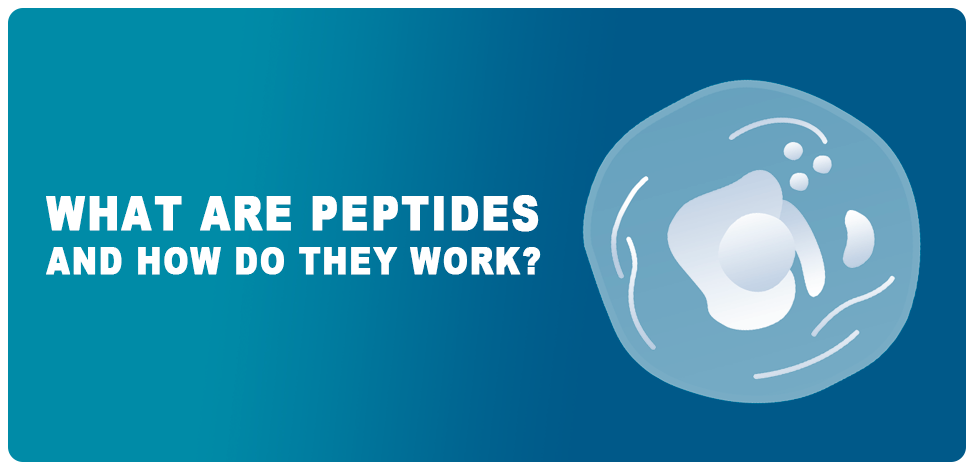What are they?
Peptides are organic substances formed by amino acid chains. The human body synthesizes most of it itself and receives a smaller part from food. Their significance is actively discussed in the scientific and medical worlds. There is an opinion that peptides prolong youth and can help to repair many ailments by addressing epigenetic factors on a DNA level, which often become the culprits of many chronic illnesses.

What are the main nutrients that are required to repair our body?

The most important type of macronutrient (substances required to maintain the vital activity of the body) are proteins (proteins), as they form all tissues..
They are made up of amino acids, which include:
- 500 in total;
- 240 - in free form;
- 20 is in the DNA code.
Amino acids are connected to each other by a peptide bond —CO—NH—. Accordingly, they are all formed by carbon, oxygen, nitrogen and hydrogen.
More than 50 amino acids are needed to form a protein. If there are from 2 to 50 of them in one molecule, we are talking about a peptide. Simply put, it is a fragment of a protein.
When a protein is broken down, it does not break down into amino acids alone: more peptides are released. They can be of different lengths, depending on the number of connected elements.
Types and Classification
Depending on the number of amino acids linked into a molecule by a peptide bond, several types of peptides are distinguished:
- 2 - dipeptides;
- 3 - tripeptides;
- 4 - tetrapeptides;
- 5 - pentapeptides;
- And etc……
Substances whose molecules contain from 2 to 10 amino acids are called oligopeptides (or short peptides). Most oligopeptides have low molecular weight and are easily absorbed by our bodies. Most of the Wellness Chemist peptide ranges are made out of natural plant-based Oligopeptides that are absolutely safe to use.
There is also a classification of the peptides by origin. Some peptides are made within the body and have a known structure. Some of them are created artificially on the basis of animal raw materials or they can be made out of plants. Some of them are completely synthetic and are made in various biological labs.
Classification by bioregulatory action
 We can also classify peptides by the set of functions they perform:
We can also classify peptides by the set of functions they perform:
- Neuropeptides - produced in the brain and regulate the central nervous system (endorphins, enkephalins).
- Peptide regulators of immunity - increase protective functions (cyclosporine A, taffin, thymosin).
- Peptide hormones - affect the course of the main physiological functions of the body (adrenocorticotropic, melanotropins, statins, glucagon, gastrin, vasopressin, oxytocin).
- Peptide antibiotics - have an antibacterial effect (gramicidin S, thyrocidin, bacitracins, actinomycins).
Some peptides can be produced by mushrooms (pale toadstool), bees, snakes, scorpions and bacteria. Many microbial toxins also have a peptide structure.
Process of the digestion of peptides
 Proteins enter the body with food. During digestion, they are broken down into peptides. Under the action of hydrolysis in the stomach, all bonds cannot be destroyed at the same time, so the release of amino acids occurs later.
Proteins enter the body with food. During digestion, they are broken down into peptides. Under the action of hydrolysis in the stomach, all bonds cannot be destroyed at the same time, so the release of amino acids occurs later.
Oligopeptides move faster into the small intestine: there they are finally absorbed. Polypeptides also enter the large intestine, where they are putrefied. This can upset the balance of microflora. That is why a special probiotic program is very important to improve protein metabolism.
Oligopeptides are easily absorbed and delivered to the cells through the blood. Due to their small size, they can penetrate directly into their structure and integrate into DNA. In this process, some of the peptide scientists saw great potential for prolonging youth and repairing some of the damaged functions of our organs.
How do peptides work?
To understand the antiaging functions of peptides, it is important to understand the mechanism of their work. When some of them enter the cell's DNA, they attach themselves to the telomere. As a result, the latter lengthens.
Any cell of the human body, no matter what tissue they make up, divides 50 times during a lifetime. Under the influence of external harmful factors and past diseases, division cycles can be accelerated.
Acceleration of the cell divisions causes premature aging. We do not know how to stop this process. However, if you increase the telomere, the cell will receive a reserve for additional division cycles. This prolongs her youth, and ultimately cell’s life. The oligopeptide molecule, joining the telomere, provides just such a reserve.
Also when some of the peptide complex attaches itself to the specific cell DNA, it also helps to restore some of the epigenetically damaged sections of DNA which leads to normalizing multiple functions of those specific cells. This often leads to the miraculous healing of diseased tissues or organs.
Wellness Chemist Bio-regulating Peptides
A number of world-leading biologists have discovered that the part of the protein that is not excreted from the body, but is absorbed and penetrates into the cell structure, is a peptide bioregulator.

- replenishment of own peptides lost under the influence of external factors;
- increased adaptability of tissues to stress;
- prevention of cell division failures;
- restoration of basic physiological functions.
With age (on average after 30-35 years), the body produces less and less peptides, so the aging process starts and actively proceeds. But a person can receive an additional portion of such bioregulators in the form of special preparations. Their action will allow this process to slow down, which will affect both the functioning of the organs and their appearance.
Oligopeptides for the treatment of diseases and Longevity
At Wellness Chemist we do not consider peptide preparations as medical drugs. Most medical drugs are synthetic products. Based on them, the body cannot synthesize living cells.
Oligopeptide molecules, on the other hand, have a natural origin and some of them are sharing their structure and the way they work between plants, animals and humans. Some oligopeptides when entering the human body, lengthen the telomere, repair DNA sections and restore tissue vitality in a natural way.
However, the main scientific advancement was a development of a bio-regulating, organ-specific peptide complex that combines oligopeptides with some other natural active bio-regulating ingredients capable of targeting selective tissues and organs and maximizing their regeneration and recovery.
Oligopeptides and cosmetology
Oligopeptides contribute to the production of proteins, including collagen. Therefore, cosmetology could not ignore them. Adding them to anti-aging face and body care products provides:
- Regular cell renewal. The skin looks fresh and stays young longer.
- Strengthening the matrix framework due to additional collagen. This prevents wrinkles and sagging.
- Removal of edema and inflammation. The skin is quickly restored without negative consequences.
- Strengthening the protective barrier. The impact of the external environment is minimized.
The use of peptide preparations is also recommended for the treatment of dermatological diseases. So, they help fight against rosacea, acne, rosacea, and dermatitis of various natures.
Oligopeptides and weight loss
Protein fragments capable of bioregulation are used not only in medicine and cosmetology but also in healthy nutrition. Weight loss is possible due to the complex effect on different body systems:
- improved metabolism;
- activation of digestion;
- restoration of hormonal balance;
- normalization of the process of glucose uptake.
There are separate peptides, the purpose of which is lipid burning or appetite suppression. But losing weight requires a comprehensive approach to prevent the negative effects of weight loss. It is important that the skin does not sag as a result and is not covered with stretch marks. Peptide preparations make it possible to take this into account as well.












